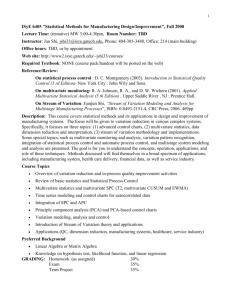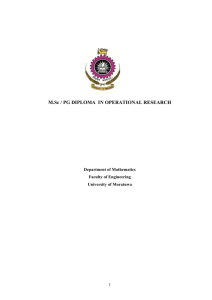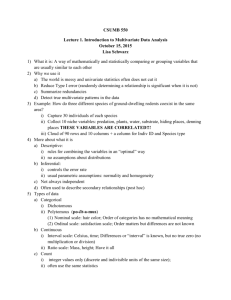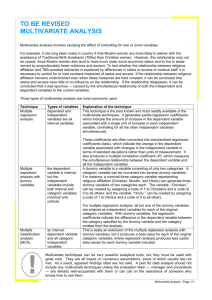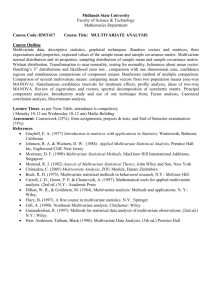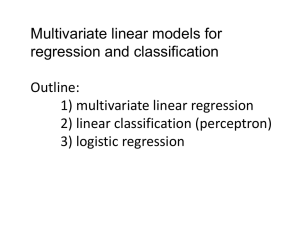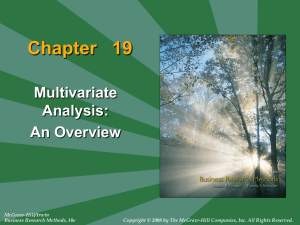Chap 7 Using Multivariate Statistics
advertisement
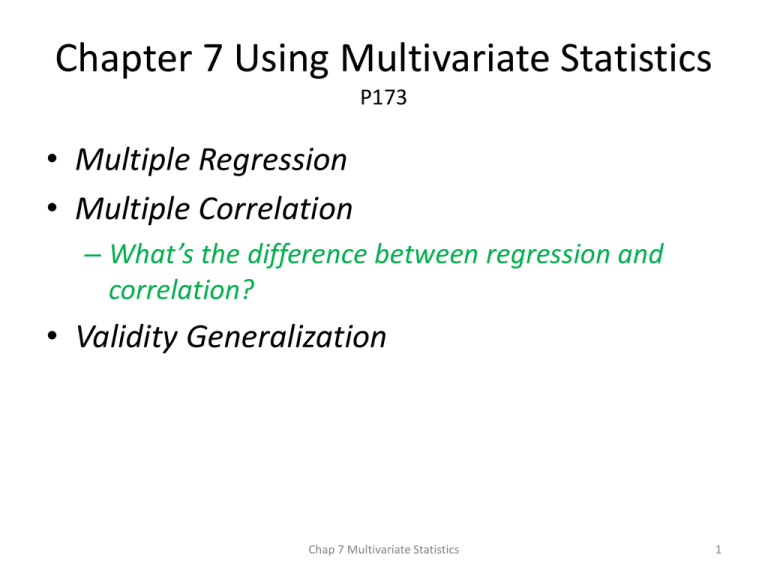
Chapter 7 Using Multivariate Statistics P173 • Multiple Regression • Multiple Correlation – What’s the difference between regression and correlation? • Validity Generalization Chap 7 Multivariate Statistics 1 COMPENSATORY PREDICTION MODELS • Regression Equations – Y = a + b1X1 + b2X2 • – what’s the difference between b and β weights? – Why use one or the other? Multiple Correlation – How are the correlations among the predictors related to the multiple R? – Would you want high correlations among predictors? • Suppressors and Moderator Variables – Examples of suppressor variables – Suppressor variables explained – Suppressors • How could reading ability act as a suppressor for security guard performance? – Moderators • • How could social skills moderate the conscientiousness-performance relationship? Other Additive Composites – Unit weighting is usually sufficient – Could you add veterans’ preference or religious preference? Chap 7 Multivariate Statistics 2 NONCOMPENSATORY PREDITION MODELS • Multiple Cutoff Models – Two situations warrant it: • 1. vital trait • 2. if variance is too low (small) to yield sig r. – What can happen if cutoffs are all very low? – What can happen if cutoffs are all very high? • Sequential Hurdles – When could this be useful? Chap 7 Multivariate Statistics 3 REPLICATION AND CROSS-VALIDATION • What IS cross validation? • Why is it necessary? Chap 7 Multivariate Statistics 4 VG • Situational Specificity v. • Validity Generalization – Special form of meta-analysis – All validity coefficients (across studies) • Would be the same if not for Artifacts – Hunter & Schmidt (‘90) • If var in coefficients is explained by artifacts, reject SS • Reject Sit Spec if artifacts 75 % of the variance in coefficients is explained by known artifacts Chap 7 Multivariate Statistics 5 VG • Three possible outcomes – Refute or support Sit Specificity – Refute or support VG Chap 7 Multivariate Statistics 6

